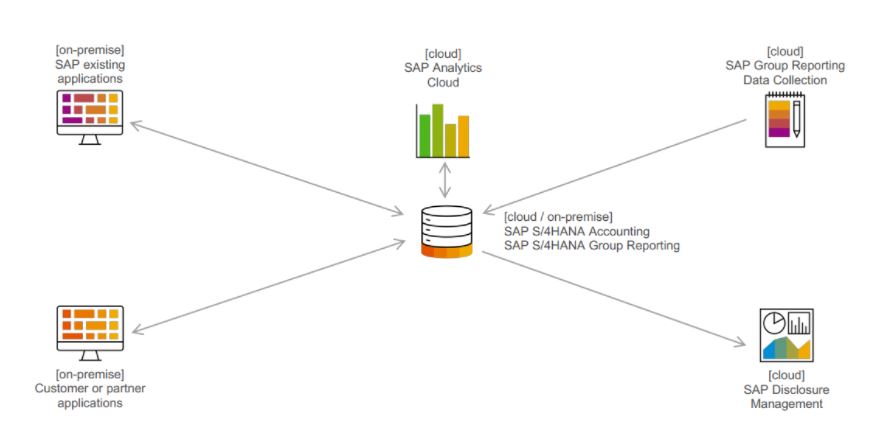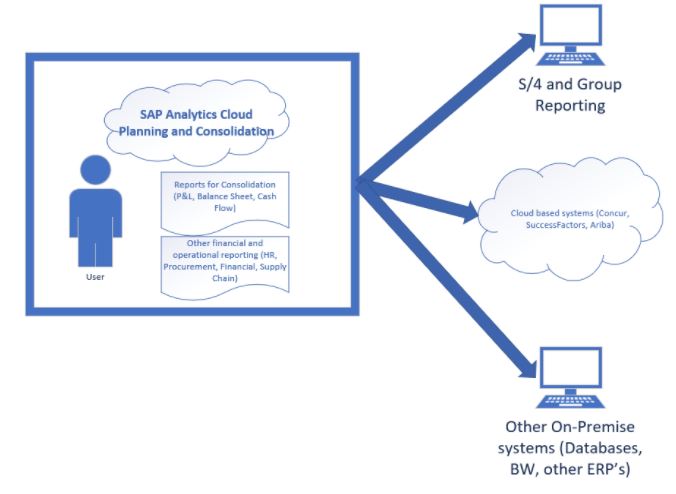Business Planning and Consolidation (BPC) has long been SAP’s flagship product for planning and consolidation. With SAP’s market strategy of going to the cloud, SAP Analytics Cloud (SAC) Planning and Group Reporting are now the preferred platforms over BPC. One of the strengths and value propositions of BPC was to have one integrated solution for consolidations and planning. At first glance, it might appear that the once-integrated solution has been separated into two solutions, especially given the fact that there are two different products names. But this couldn’t be further from the truth. While it is true SAC is a separate product, the reality is that SAC Planning has joined a product with much greater overall capabilities. When compared to BPC, SAC is an all-encompassing product with BI, predictive, analytics and a wide variety of connections to the entire enterprise. It is a comprehensive platform, with planning being one of many features. The ability to connect to most systems has significant advantages in that planning and forecasting can be applied to any number of areas (e.g., HR, marketing, sales and operational planning) as compared to focusing only on financial planning. This flexibility coupled with the breadth of capabilities in SAC, provides for a much more powerful planning and reporting tool.
So where does consolidation come to play in this scenario? With Group Reporting, SAP has embedded the consolidation engine into the core S/4HANA system. Group Reporting is used to do the core consolidation of entities with additional functionality such as currency conversion, equity ownership calculations, intercompany eliminations, balance carryforward, currency translation adjustments and many others.
Group Reporting consolidation features (and how they relate to SAC) include:
- Uses both SAP or non-SAP data, as does SAC.
- Creates several versions of data for comparisons of pre- and post-consolidation data, joining it with other data (e.g., simulations, forecasting and restatement) using SAC analytics. It also unlocks hidden insights and predictive capabilities.
- Embedded monitors help perform consolidation tasks such as various interunit eliminations and data validation. This feature is enhanced by using SAC as a source to drill into the details of S/4HANA and other source systems.
- While SAP S/4HANA universal journal is usually the source and data are processed, Group Reporting’s limited capabilities will be enhanced using SAC as the reporting and analytics engine.
- Data may be loaded with flat files or APIs from any source system. SAC can also be used as a source to generate these flat files and can cleanse and reconcile data between source systems.
- Post manual journal entries to standardize reported data but SAC should be used to report on this data. SAC is more flexible and user friendly, allowing for greater enrichment capabilities.
- Validations check the consistency of data throughout the consolidation process, using comments and linked reports functions.
- Translate reported financial data into the group currency and allow SAC to report data on transaction, local, group and reporting currency.
- Automate interunit eliminations, consolidation of investments and perform the elimination and consolidation and utilize SAC to perform the analytics on the data.
- Automate consolidation of investments.
- Deliver frequently used reports out of the box as analytical apps including balance sheets, P&L statements, cash flow statements or statements of comprehensive income and statements of changes in equity. Use SAC where necessary to pick up where Group Reporting falls short.
As expected, SAP delivers robust out of the box consolidation functionality to handle any use case, no matter how complex. This comprehensive set of capabilities give companies the ability to quickly and efficiently roll up consolidated results in S/4HANA. Once there, SAC can be used as the primary reporting engine for consolidated reports (e.g., P&L, balance sheet, cash flow). In this way, SAC and Group Reporting are an integrated platform, with GR being the consolidation engine and SAC the mechanism that delivers the output. Ultimately, the solution provides for a fully integrated system with planning, actual and consolidated data using one platform in real time.

One advantage of this new paradigm is that instead of having a system limited to integrated financial planning and consolidations, the solution now consolidates all data in an organization, giving a much more comprehensive view of results, deeper analysis and the ability to see relationships across the company. This can also include multiple source systems such as legacy systems, multiple financial systems (e.g., ECC, S/4HANA, CFIN, BPC, etc.) and other non-SAP and SAP systems. These additional capabilities allow for broader, more impactful insights; for example, how do marketing activities relate to sales? Or, how does employee satisfaction and performance impact employee cost and financial results? Using a powerful predictive and machine learning engine, different and disparate sources can be analyzed, leading to a deeper understanding of a company’s performance. And of course, this all ties into planning and consolidation where overall company results are combined to see results of operations for total net income, statement of cash flow and status of balance sheet.
As companies continue to assess cloud strategies, simplification, and enhanced analytics capabilities, the combination of SAC Planning and Group Reporting can deliver tremendous benefits. In addition, this approach is in line with SAP’s strategy for the intelligent enterprise. This combination allows companies to align resources across the enterprise, from sales, marketing and human resources to operations and production, enabling integrated financial consolidated results. Organizations can use the planning and forecasting process to not only predict results, but to identify new opportunities to help drive future growth and profitability.

To summarize, SAP is converging its platform so that users have all relevant information at their fingertips. From operational data to strategic information, from management reporting views to consolidated financials. All are related and critical for organizations to understand key challenges, risk, and opportunities so that decisions can be made, and actions taken to enhance results. SAC Planning and Group Reporting are a cornerstone to this process and take planning and consolidation to the next level in delivering unprecedented value.
To learn more about our SAP Analytics Cloud capabilities, contact us.






